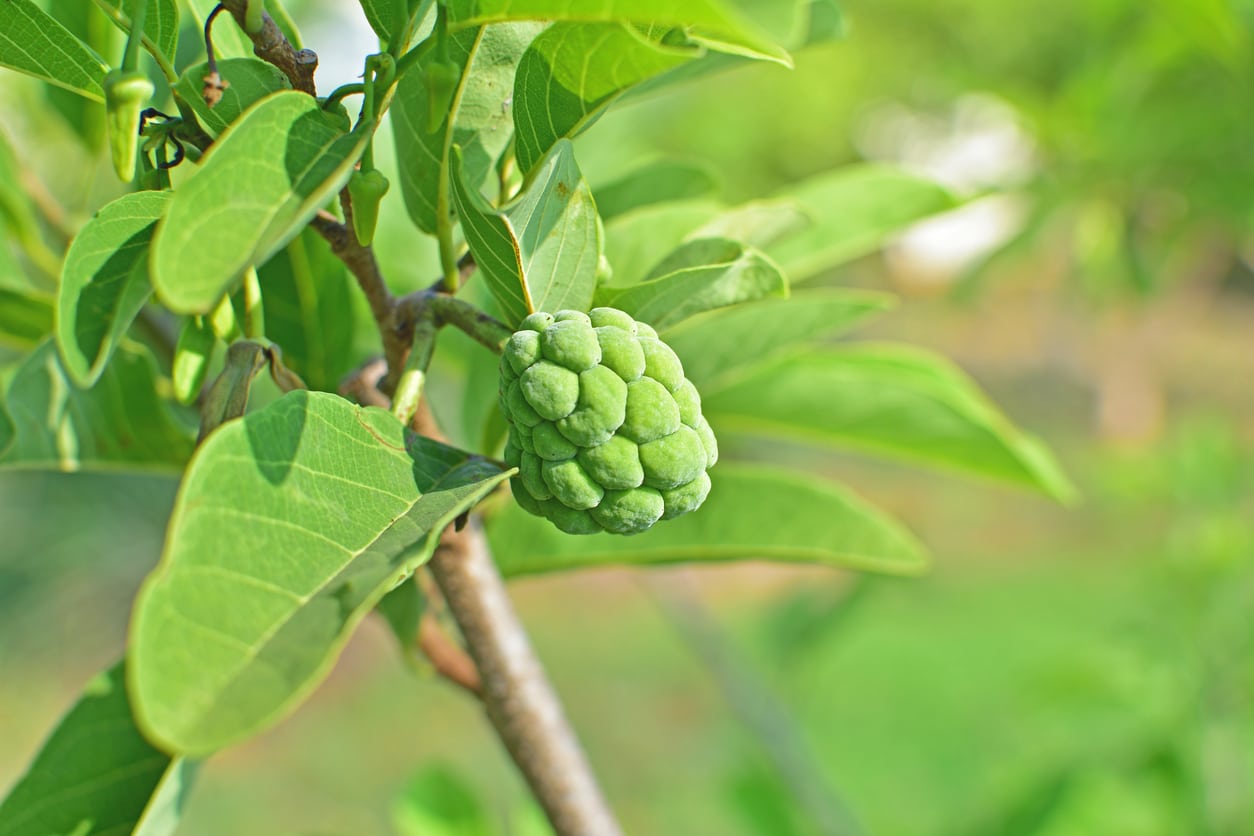
Cherimoya trees are subtropical to mild temperate trees that will tolerate very light frosts. Possibly native to the Andes mountain valleys of Ecuador, Colombia, and Peru, Cherimoya is closely related to the sugar apple and is, in fact, also called the custard apple. Read on to learn about growing cherimoya fruit, cherimoya plant care, and other interesting cherimoya tree info.
What is a Cherimoya?
Cherimoya trees (Annona cherimola) are rapidly growing evergreens that are deciduous when grown in the cooler California climate from February to April. They can attain a height of over 30 feet (9 m.), but can also be pruned to restrain their growth. In fact, young trees grow together to form a natural espalier that can be trained against a wall or fence. Although the tree grows rapidly at one time in spring, the root system tends to stay rather stunted and weak despite the height of the tree. This means that young trees need to be staked for the first few years of their life.
Cherimoya Tree Info
Foliage is dark green on the top and velvety green on the underside with obvious veining. The aromatic blossoms are borne singly or in groups of 2-3 on short, haired stalks along old wood but at the same time as new growth. The short-lived blooms (lasting only two days) are comprised of three fleshy, green-brown outer petals and three small, pink inner petals. They open first as female blooms and later as male. The resulting cherimoya fruit is a bit heart-shaped and 4-8 inches (10-20.5 cm.) in length and weighing up to 5 pounds (2.5 kg.). The skin varies according to the cultivar from smooth to covered with rounded bumps. The inner flesh is white, aromatic, and slightly acidic. Custard apple fruit ripens from October to May.
Cherimoya Plant Care
Cherimoyas need sun combined with cool marine nighttime air. They do well in an array of soil types but thrive in well-draining, medium-grade soil with moderate fertility and a pH of 6.5-7.6. Water the tree deeply biweekly during the growing season and then stop watering when the tree goes dormant. Fertilize cherimoyas with a balanced fertilizer like 8-8-8 in midwinter and then again every three months. Increase this amount each year until the tree begins to bear. Cherimoya fruit can be rather heavy, so pruning to develop strong branches is important. Train the tree to two scaffold branches during its dormant period. The next year, remove two-thirds of the previous year’s growth and leave 6-7 good buds. Thin out any crossing branches. Young trees should be protected from frost by wrapping the trunk with sponge foam or the like or by covering the entire tree. Also, in cooler regions, plant the tree next to a southern-facing wall or under the eaves where it can get access to trapped heat. Lastly, natural pollinators may be a problem. It is best to hand pollinate in mid-season over the course of 2-3 months. Hand pollinate in the early evening by gathering the white pollen from the anthers of a fully open male bloom and immediately transfer it to a receptive female using a small, soft brush. Hand pollinate every 2-3 days on flowers that are just inside the tree to avoid wind- or sun-burned fruit. If the tree sets heavily, be prepared to thin the fruit. An overabundance of fruit will result in small custard apples and smaller yields in the future.
Sign up for the Gardening Know How newsletter today and receive a free copy of our e-book "How to Grow Delicious Tomatoes".

Amy Grant has been gardening for 30 years and writing for 15. A professional chef and caterer, Amy's area of expertise is culinary gardening.
